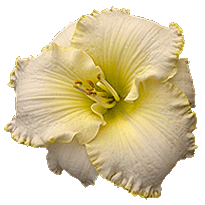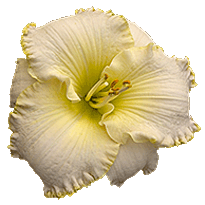



The most important, if not the only, consideration in purchasing a new daylily cultivar is how well it will perform in your garden. Will it just barely survive, or will it thrive? How well it is performing in someone else’s garden may or may not have relevance to how it does in yours. For the purposes of this discussion, we are assuming that all non-climatic factors are equal, i.e. your daylily is planted in a sunny spot; your soil is maintained at an optimal level; you water regularly, etc.
As a gardener, you are probably familiar with the USDA Plant Hardiness Zone Map.
If not, here’s the link: http://planthardiness.ars.usda.gov/PHZMWeb/
For the American Horticultural Society Heat Zone Map:
http://ahsgardening.org/gardening-resources/gardening-maps/heat-zone-map
Both of these resources, while valuable and helpful, have their limitations. The USDA map is based solely on winter lows; the AHS Heat Zone Map is based solely on number of days above 86° F.
For a better resource, that takes into consideration the total climate: length of growing season, timing and amount of rainfall, winter lows, summer highs, and humidity, check out this site. It features interactive maps of various climatic areas of the United States:
http://www.sunset.com/garden/climate-zones/climate-zones-intro-us-map-00400000036421/
Knowing where you live in relation to these zones should be the first, but not the only, consideration when purchasing a new daylily, or any other perennial for that matter.
But let’s start with the one factor that seems to get most, if not all, of the attention: cold (a.k.a. “winter”) hardiness, something with which we were very familiar when we lived in Zone 5. (One can easily extrapolate the issues for drought or heat hardiness.) The zone hardiness listed on the label or in the description of the daylily, while helpful, unfortunately does not go into any detail.
Problem one: For the sake of example, let’s take a daylily, or any other perennial, that is listed as being cold hardy in all zones down to Zone “x.” That means that it will, or should, survive the winter in zone “x”. What it doesn’t say is how well it will survive. Will it come bursting forth in the spring with great energy and vigor? Or will it just manage to send up a desperate fan, barely clinging to life? Either way, it has lived up to the claim of the label: it has survived, as promised, in zone “x”.
Problem two: Keeping in mind that some daylily cultivars seem to be genetically programmed to increase more than others, a further indication of how well a particular cultivar has faired during the winter on the survive/thrive scale is the amount of “increase” that occurs. It should not be assumed that a colder climate will produce less increase; some cold-hardy dormants seem to require a cold winter in order to produce their best increase, increasing progressively less well in increasingly warmer climatic zones.
Problem three: Climatic zones as defined by the USDA Zone Map, stretch across wide differences in latitude. Latitude affects the length of the growing season. Are you considering the purchase of a daylily that re-blooms? How long of a growing season does it require to re-bloom. Is your growing season long enough for it?
Bottom line: Keep in mind that how well a daylily will perform in your garden as compared to someone else’s garden depends on a host of factors, not the least of which are overall climatic conditions.
Next Article - Daylily Cultivation
Back to - Daylily Article Index
For Reference - Glossary of Daylily Terms

| Home Page | Our Daylilies | Daylily Cultivation Article Index |
| Information Center | Site Map | Offsite Links |
Internet Explorer 5+
Mozilla Firefox 2+
(You can download either of the browsers listed above by clicking on their name link)







